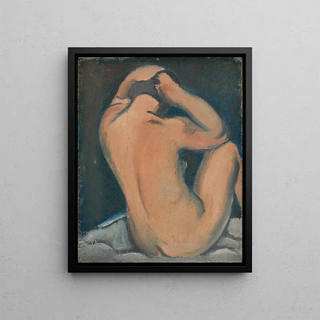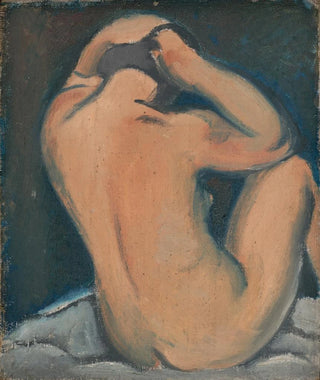Art print | Study of a nude - Mikuláš Galanda


View from behind

Frame (optional)
In the world of art, some works transcend mere representation to become witnesses of a particular era, state of mind, or unique vision. "Art print of a study of a nude - Mikuláš Galanda" fits into this tradition, offering an immersion into the very essence of the human form. This piece, imbued with sensitivity and delicacy, invites the viewer on an introspective journey, where every curve and shadow tells a story. Contemplating this study immediately transports one into the artist's universe, where the beauty of the human body is celebrated with such finesse that it becomes almost tangible.
Style and uniqueness of the work
The uniqueness of "Art print of a study of a nude" lies in how Galanda manages to capture the fluidity and grace of the body. The choice of lines, both soft and assertive, gives the piece a dynamic that seems to defy time. The nuances of light and shadow blend harmoniously, creating an atmosphere that is both intimate and universal. Galanda uses a subtle palette that evokes deep emotions, making each gaze a new discovery. It is through this approach that the artist succeeds in transcending a simple anatomical study to offer a true ode to human beauty and vulnerability. The composition, although centered on the nude, hints at a narrative depth, suggesting personal and universal stories alike.
The artist and his influence
Mikuláš Galanda, a prominent figure in Slovak art of the 20th century, knew how to mark his era with his bold vision and innovative approach. Influenced by the artistic currents of his time, he integrated elements of modernism while maintaining a deeply rooted sensitivity in tradition. His work goes beyond mere representation; he seeks to establish a dialogue between the viewer and the work, to evoke emotions and provoke reflections. Galanda also played a crucial role in the evolution of art in Slovakia, encouraging many artists to explore new paths. His legacy endures, and "Art print of a study of a nude" is a testament to that.

Matte finish

View from behind

Frame (optional)
In the world of art, some works transcend mere representation to become witnesses of a particular era, state of mind, or unique vision. "Art print of a study of a nude - Mikuláš Galanda" fits into this tradition, offering an immersion into the very essence of the human form. This piece, imbued with sensitivity and delicacy, invites the viewer on an introspective journey, where every curve and shadow tells a story. Contemplating this study immediately transports one into the artist's universe, where the beauty of the human body is celebrated with such finesse that it becomes almost tangible.
Style and uniqueness of the work
The uniqueness of "Art print of a study of a nude" lies in how Galanda manages to capture the fluidity and grace of the body. The choice of lines, both soft and assertive, gives the piece a dynamic that seems to defy time. The nuances of light and shadow blend harmoniously, creating an atmosphere that is both intimate and universal. Galanda uses a subtle palette that evokes deep emotions, making each gaze a new discovery. It is through this approach that the artist succeeds in transcending a simple anatomical study to offer a true ode to human beauty and vulnerability. The composition, although centered on the nude, hints at a narrative depth, suggesting personal and universal stories alike.
The artist and his influence
Mikuláš Galanda, a prominent figure in Slovak art of the 20th century, knew how to mark his era with his bold vision and innovative approach. Influenced by the artistic currents of his time, he integrated elements of modernism while maintaining a deeply rooted sensitivity in tradition. His work goes beyond mere representation; he seeks to establish a dialogue between the viewer and the work, to evoke emotions and provoke reflections. Galanda also played a crucial role in the evolution of art in Slovakia, encouraging many artists to explore new paths. His legacy endures, and "Art print of a study of a nude" is a testament to that.






